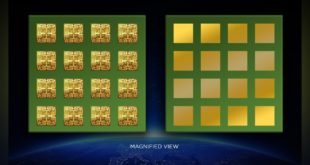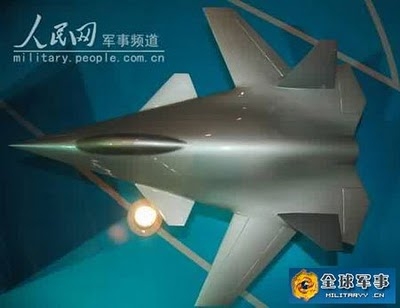Radiation in a high-frequency circuit or system can be difficult to control. For that reason, RF/microwave absorber materials are often added to circuits to suppress or eliminate unwanted radiation either from the circuit to the outside or to minimize the effects of radiated signals outside a circuit (such as broadcast signals) on the performance of the circuit.
Microwave absorbers are special materials, often elastomer or rubber-based, which are designed to offer a user-friendly approach to the reduction of unwanted electromagnetic radiation from electronic equipment. Microwave absorbers are used in all kind of industries like: Military, Automotive, Telecommunications, Antennas and EMC applications.
Microwave absorbers have been used in military applications for several decades. They have been traditionally used for EMI reduction, antenna pattern shaping and radar cross reduction. More recently with the rise of wireless electronics and the movement to higher frequencies microwave absorbers or “noise suppression sheets” (NSS) are used to reduce electromagnetic interference (EMI) inside of the wireless electronics assemblies.
They also work well to minimize cavity to cavity cross-coupling, and microwave cavity resonances. When comprised of a silicone elastomer matrix with ferrous filler material, microwave absorbers provide RF absorption performance over a broadband frequency range from 500 MHz to 18 GHz.
An EMI microwave absorber is filled with dielectric ferromagnetic materials. As a microwave strikes these materials, the wave becomes attenuated and loses energy. The energy loss is due to a conversion from EMI energy to heat energy via phase cancellation. The amount of attenuation of the microwave is dependent on the frequency and the electrical permittivity (dielectric constant) and magnetic permeability of the material. The amount attenuation varies by frequency.
Types of microwave absorbers
The microwave absorbing materials can be classified into molded, cast liquids and coatings, films and elastomers, foams, and military specialty microwave and custom magnetic absorbers. There are two general classes of microwave absorbing materials, and they have to do with the frequency range that the products can effectively attenuate. Broadband: these microwave absorbers, operate over a large frequency spectrum, but generally have only low to moderate attenuation.
Narrowband or tuned: these microwave absorbers operate over a much smaller frequency spectrum, however in that range, their attenuation is better than Broad Band absorbers. Tuned Frequency Absorbers, also known as resonant frequency absorbers, provide great reflection loss at a discrete frequency, typically offering 20dB of attenuation. Tuned Frequency Absorbers offer a narrowband of absorption, typically +/-10% of the resonant frequency, so are best used when a single discrete frequency is trying to be absorbed. The material can be tuned to any frequency from 1 to 40 GHz, by simply changing the formulation and thickness.
There are two general scenarios for microwave absorbing materials:
Cavity resonance is in the near field, very close to the EMI field source. This occurs when signals are trapped/contained within a metal enclosure or compartment. Not only is the energy absorbed but induced currents from the field itself are impeded by the absorber.
Near field, absorption can take place right on the radiating element. In order to avoid shorting, the absorber must have very high resistance. Absorber thickness plays heavily in this condition.
Dielectric types, in which the absorbing filler acts on the electric field: The microwave absorber itself is considered a dielectric medium, which is an electrical insulator that can be polarized by an applied electric field. When such a material is placed in an electric field, electric charges do not flow through the material as they do in a conductor, but instead, the charges shift equilibrium positions causing dielectric polarization. This creates an internal electric field.
Foam absorbers
These absorbers are based upon open-celled foam impregnated with a carbon coating. The carbon coating makes the resultant product lossy at microwave frequencies, indeed acting like a free space resistor to incoming electromagnetic energy. These foam products range from 3.2 mm to 6.4 mm for internal cavity applications and can be several centimeters thick for outdoor applications.
Lossy Foam Absorbers: Lossy Foam Absorbers are designed with a constant coating to exhibit high insertion loss and are intended to be applied to metal surfaces inside microwave cavities, housings, radomes, networks enclosures, or antennae. Lossy Foam Absorbers are the lowest cost solution for attenuating energy at frequencies from 1GHz to 18 GHz
The convoluted Foam Absorber product series is a lightweight conductive carbon-impregnated sheet stock providing broadband reflection loss at microwave frequencies. Due to the shape of the cones on Convoluted Foam Absorbers, they exhibit high reflection loss and are intended to be applied to metal surfaces inside test boxes, housings, radomes, network enclosures or antennae. Convoluted Foam Absorbers attenuate energy at normal and high angles of incidence at frequencies from 1 GHz to 18 GHz.
Magnetic absorbers
These are thin (.1 to 3 mm) polymeric materials filled with magnetic particles. These materials have both high permeability (magnetic loss properties) and high permittivity (dielectric loss properties). This combination of properties makes these materials very effective in eliminating high-frequency EMI.
Low-Frequency EMI Absorbers product is a magnetically loaded sheet stock having high loss at sub-microwave frequencies. Low-Frequency Absorbers are designed with shaped magnetic particles that exhibit high permeability at frequencies from 500 MHz to 4 GHz. The Low-Frequency Absorber product line is the thinnest of the microwave absorber series product, with standard thicknesses of 0,2, 0,3, 0,5 and 1,0 mm.
Foam absorbers Vs Magnetic absorbers
In these enclosure applications the designer needs to understand the tradeoffs between using the magnetic absorber vs the lossy foam type absorber. The foam absorber is a much more cost-effective solution, provided it will meet the performance goals. However, there are a couple major reasons to use the magnetic sheet absorbers (Q-Zorb)
• Foam absorbers can breakdown over time causing resistive particles to drop onto to circuit traces
• Energy along the side walls of cavity are H field (magnetic) dominated currents. The E field is at a minimum along the walls and materials with only dielectric loss (resistive foams) will not perform very well in these applications. The magnetic absorbers have high H field loss and attenuate these currents.
Surface Wave Absorber product series is a thin very highly loaded sheet stock having high loss at microwave frequencies while maintaining the desirable characteristics of elastomeric binders. Surface Wave Absorbers are the most heavily magnetically loaded absorber. Surface Wave Absorbers are designed to exhibit the highest loss and are intended to be applied to metal surfaces for traveling or surface wave attenuation. Surface Wave Absorbers attenuate traveling wave energy at frequencies from 1 GHz to 20 GHz.
Cavity Resonance Absorber product series is a thin magnetically loaded sheet stock having loss at microwave frequencies while maintaining the desirable characteristics of elastomeric binders. Cavity Resonance Absorbers are designed to exhibit high loss and are intended to be applied to metal surfaces inside microwave cavities to reduce the Q of the cavity. Cavity Resonance Absorbers attenuate energy at normal and high angles of incidence at frequencies from 1 GHz to 20 GHz
Tuned frequency materials are used in far field applications such as direct radar reflections off of an object. Surface wave absorbers are used for high angle of incidence applications and for cavity noise suppression. Many design engineers that have a cavity noise problem at a certain
frequency want to use a tuned frequency absorber tuned to that frequency. However that is not the best performance they can achieve. Note that the tuned frequency materials offer good performance at normal angles of incidence, but perform more poorly at higher angles of incidence. Inside the cavity noise generated is at a number of angles of incidence and also a significant of surface wave energy. The surface wave materials offer better performance in these applications.
References and Resources also include:
http://blog.parker.com/the-basics-of-microwave-absorber-materials
 International Defense Security & Technology Your trusted Source for News, Research and Analysis
International Defense Security & Technology Your trusted Source for News, Research and Analysis

